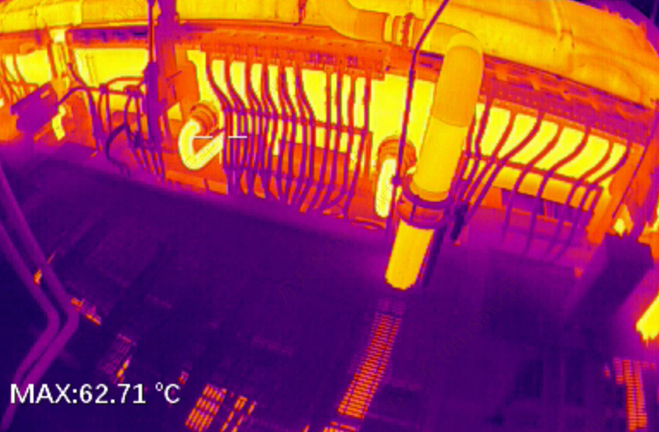Pain is an unpleasant subjective sensation and emotional experience, often associated with actual or potential tissue damage. Because pain is inherently subjective, the medical field has traditionally relied on pain rating scales to assess and record pain levels, without a tool to objectively visualize or measure it. However, infrared thermography—a groundbreaking method that detects diseases through body temperature—offers a way to make pain visible and measurable.
How Do Infrared Thermography Camera Operate?
Infrared thermography is a diagnostic tool that measures body temperatures to detect abnormalities. Its clinical applications include:
1. Objective Analysis of Pain: It provides quantifiable data on pain symptoms and visualizes the affected areas.
2. Detection of Hidden Symptoms: Identifies abnormal blood flow distribution caused by nerve dysfunction.
3. Unique Visualization of Musculoskeletal Disorders: The only method that can visualize the condition of muscles in bone, muscle, and fascia diseases.
4. Treatment Evaluation: Enables objective comparisons of treatment effectiveness before and after interventions.
Infrared Thermography’s Medical Applications and Key Advantages
1. Pain Localization and Assessment: Identifies the location, nature, and severity of soft tissue pain, such as neck, shoulder, and lower back pain.
2. Inflammation Detection: Pinpoints acute and chronic inflammation, assessing its extent and severity.
3. Vascular Function Monitoring: Assesses the functional state of arteries and veins, as well as blood supply conditions in limbs.
4. Tumor Monitoring: Provides early warning of tumors, monitors their progress, and evaluates treatment effectiveness.
5. Sub-health Evaluation: Measures and assesses general health and wellness.
Advantages of Infrared Thermography in Pain Management
1. Objective Recording of Pain: Previously, no device could objectively record pain, but infrared thermography offers a breakthrough by making pain visible through temperature variations.
2. Detection of Temperature Variations: Pain areas often exhibit abnormal metabolic and circulatory changes, which lead to temperature fluctuations. Infrared thermography captures these changes, reflecting the pain visually.
3. Chronic Pain Detection: Chronic pain is often hidden, with a long course and a mix of subjective and objective symptoms. Infrared thermography objectively reveals these underlying conditions.
4. Visualization and Quantification of Pain: Infrared thermography transforms pain into visible, quantifiable data, providing a solid basis for monitoring disease progression and evaluating treatment outcomes.
The Advantages of Guide Sensmart's Infrared Thermography Cameras in Pain Management
When choosing an infrared thermography camera for pain management, Guide Sensmart offers some of the best devices on the market. With high-resolution thermal images and user-friendly features, Guide Sensmart thermal cameras provide the clarity, precision and reliability needed in medical diagnostics. Here's why they're an excellent choice for pain visualization:
1. High Sensitivity and Accuracy
Guide Sensmart's infrared thermography cameras are known for their high sensitivity, which is capable of detecting even the smallest temperature differences. This is essential in medical diagnostics, where early detection of abnormal temperature patterns can make a significant difference in patient outcomes.
2. Non-Invasive and Safe
Infrared thermography is a non-invasive technique, making it safe for repeated use in both chronic and acute pain assessments. Patients can undergo thermal imaging without the risks associated with other diagnostic tools like X-rays or MRIs.
3. Fast and Real-Time Imaging
With Guide Sensmart's advanced technology, thermal imaging can be previewed and transmitted in real-time. This is especially beneficial in clinical settings where doctors need immediate results to make decisions on treatment plans.
As more healthcare providers integrate infrared thermography into their diagnostic processes, patients can benefit from more accurate, objective assessments of pain. Whether it’s detecting inflammation, monitoring chronic pain, or evaluating the effectiveness of treatments, the ability to visualize pain with an infrared thermography camera is changing the landscape of medical diagnostics.













.svg)



_fuben.jpg)

